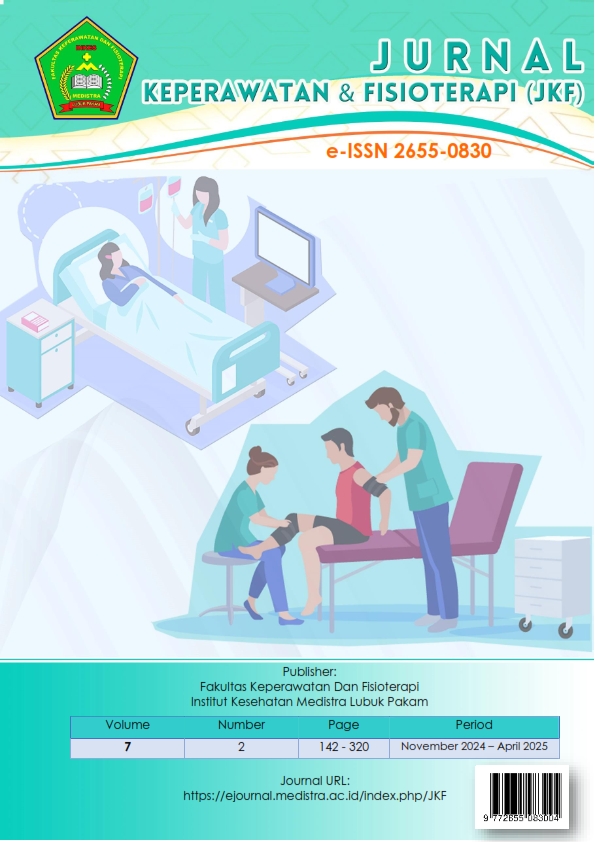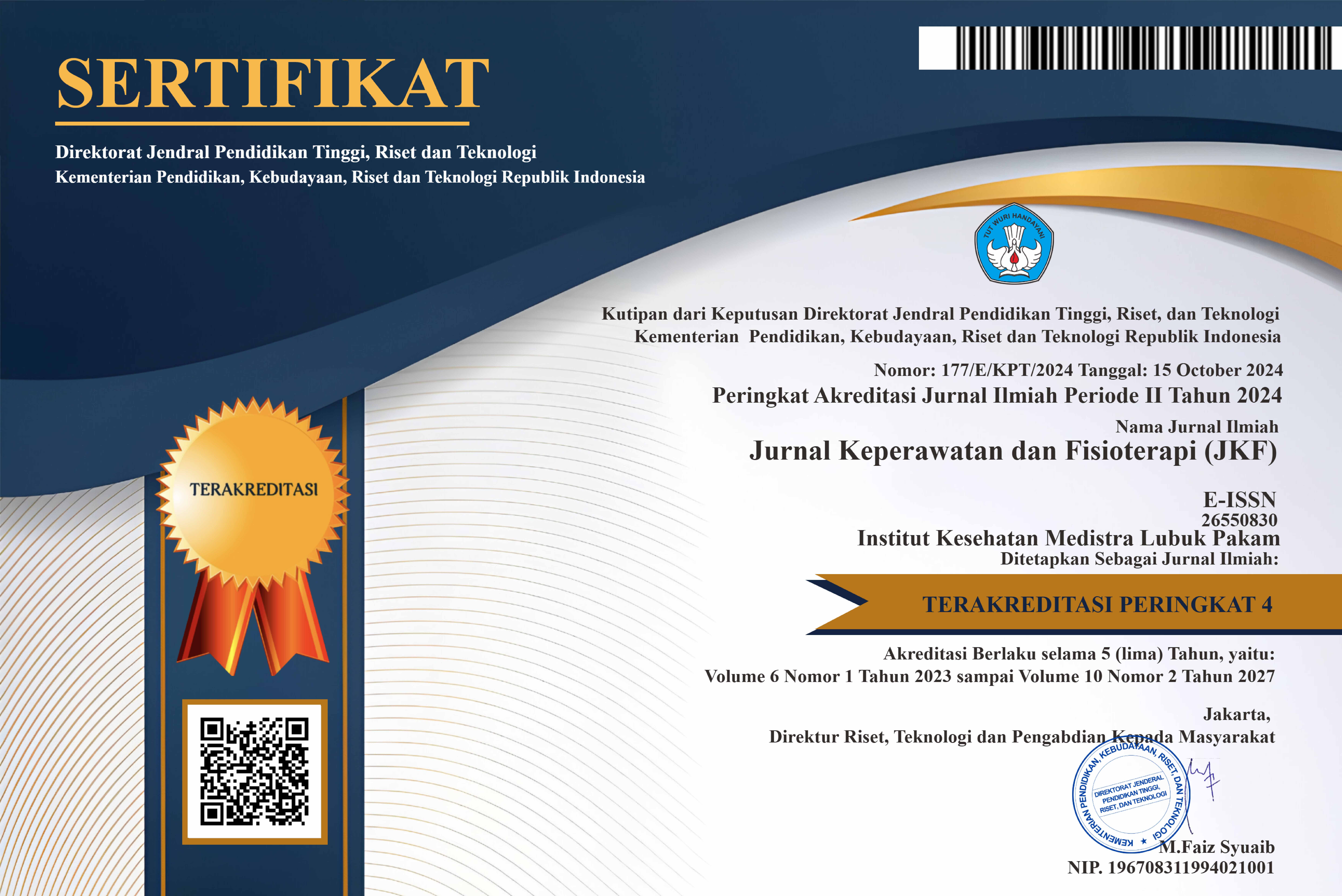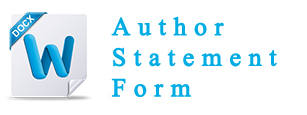Analysis of Risk and the Hazardous Chemical Waste Management System at Sembiring Regional General Hospital Delitua
DOI:
https://doi.org/10.35451/dxdj9r93Keywords:
Risk, Chemical Waste, Waste ManagementAbstract
Background: Hospitals generate hazardous chemical waste (B3) that may harm human health and the environment if improperly managed. Objective: This study aims to analyze the waste management system and risk associated with B3 waste at RSU Sembiring Delitua. Research Methods: A descriptive analytic study using a mixed-methods approach was conducted. Data were collected through observation, in-depth interviews, KAP questionnaires (Knowledge, Attitude, Practice), and document analysis. Risk assessment was performed using the Hazard Identification and Risk Assessment (HIRA) method. Results: While the waste management system covers basic procedures, weaknesses were identified in waste segregation, inadequate storage facilities, and insufficient personal protective equipment use. The highest risk was found in the storage process (risk score 12, very high category). Conclusion: Gaps remain between knowledge, attitudes, and practices in chemical waste management. Continuous training, improved facilities, and a strengthened safety culture based on risk management are necessary to enhance hazardous waste management systems in hospitals.
Downloads
References
World Health Organization. Safe management of wastes from health-care activities. 2nd ed. Geneva: WHO Press; 2014.
Al-Khatib IA, Elshami M, El Sabbagh M, Al-Khatib FA. Factors affecting the management of hospital solid waste in developing countries: A case study on the Gaza Strip. Waste Manag Res. 2010;28(9):764-771.
World Health Organization. Health-care waste management: Rapid assessment tool. Geneva: WHO; 2010.
Widiyanti E, Susanna D, Zainuddin H. Pengelolaan Limbah Bahan Berbahaya dan Beracun (B3) di Rumah Sakit. Kesmas: Jurnal Kesehatan Masyarakat Nasional. 2016;11(2):63-8.
Putri DA, Purwitasari D, Nugraheni SA. Analisis Pelaksanaan Pengelolaan Limbah B3 Rumah Sakit. Jurnal Kesehatan Lingkungan. 2020;10(1):48-56.
Pemerintah Republik Indonesia. Peraturan Pemerintah No. 101 Tahun 2014 tentang Pengelolaan Limbah Bahan Berbahaya dan Beracun. Jakarta: Kementerian Lingkungan Hidup; 2014.
Kementerian Lingkungan Hidup dan Kehutanan. Pedoman Teknis Pengelolaan Limbah Bahan Berbahaya dan Beracun (Limbah B3) Fasilitas Pelayanan Kesehatan. Jakarta: KLHK; 2017.
International Organization for Standardization. ISO 31000:2018 Risk Management – Guidelines. Geneva: ISO; 2018.
Sutrisno A, Rahmat R, Sari Y. Manajemen Risiko Limbah Bahan Kimia di Rumah Sakit. Jurnal Manajemen dan Pelayanan Farmasi. 2021;11(1):17-24.
Utami HP, Fatmawati D, Paramita SK. Analisis Risiko dan Pengelolaan Limbah Bahan Kimia di Rumah Sakit. Jurnal Ilmu Kesehatan Masyarakat. 2020;11(2):145-51.
World Health Organization. Safe management of wastes from health-care activities. 2nd ed. Geneva: WHO Press; 2014.
Creswell JW, Plano Clark VL. Designing and Conducting Mixed Methods Research. 3rd ed. Los Angeles: SAGE Publications; 2018.
Neuman WL. Social Research Methods: Qualitative and Quantitative Approaches. 7th ed. Boston: Pearson; 2014.
Polit DF, Beck CT. Nursing Research: Generating and Assessing Evidence for Nursing Practice. 10th ed. Philadelphia: Wolters Kluwer; 2017.
Palinkas LA, et al. Purposeful sampling for qualitative data collection and analysis in mixed method implementation research. Adm Policy Ment Health. 2015;42(5):533-544.
Malterud K, et al. Sample size in qualitative interview studies: guided by information power. Qual Health Res. 2016;26(13):1753-1760.
World Health Organization. Safe management of wastes from health-care activities. 2nd ed. Geneva: WHO Press; 2014.
DiCicco?Bloom B, Crabtree BF. The qualitative research interview. Med Educ. 2006;40(4):314-321.
Pemerintah Republik Indonesia. Peraturan Pemerintah Nomor 101 Tahun 2014 tentang Pengelolaan Limbah Bahan Berbahaya dan Beracun. Jakarta: Kemenkumham; 2014.
Bowen GA. Document Analysis as a Qualitative Research Method. Qualitative Research Journal. 2009;9(2):27-40.
Lynn MR. Determination and quantification of content validity. Nurs Res. 1986;35(6):382–385.
Hubbard DW. The Failure of Risk Management: Why It's Broken and How to Fix It. Hoboken: John Wiley & Sons; 2009.
International Organization for Standardization (ISO). ISO 31000:2018 Risk Management – Guidelines. Geneva: ISO; 2018.
Braun V, Clarke V. Using thematic analysis in psychology. Qual Res Psychol. 2006;3(2):77-101.
Abor PA, Bouwer AJ. Medical waste management practices in a Southern African hospital. Int J Health Care Qual Assur. 2015;28(5):410-417
Manyele SV, Anicetus H. Management of medical waste in Tanzanian hospitals. Tanzan Health Res Bull. 2006;8(3):177-182.
Ajzen I. The theory of planned behavior. Organ Behav Hum Decis Process. 1991;50(2):179-211.
Sorensen G, et al. Gender differences in worksite health promotion: results from the Working Well Trial. Am J Health Promot. 2001;15(1):21-27.
Purnomo H. Manajemen Risiko Kesehatan dan Keselamatan Kerja. Jakarta: Erlangga; 2016.
Mahmud A, et al. Knowledge, attitudes, and practices regarding hospital waste management: a case study in Lahore. J Pak Med Assoc. 2018;68(9):1296-1300.
Gerberding JL. Hospital-onset infections: a patient safety issue. Ann Intern Med. 2003;138(5):409-413.
Lin YH, et al. Managing biomedical waste in Taiwan: practices and challenges. J Environ Manage. 2014;144:8-15
Downloads
Published
Issue
Section
License
Copyright (c) 2025 Herlina Herlina

This work is licensed under a Creative Commons Attribution 4.0 International License.
Copyright in each article is the property of the Author.


























